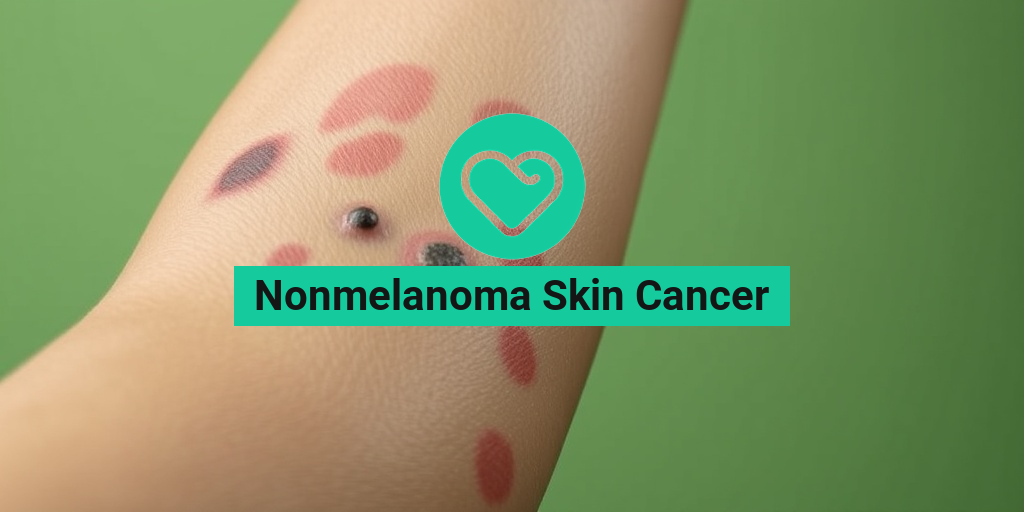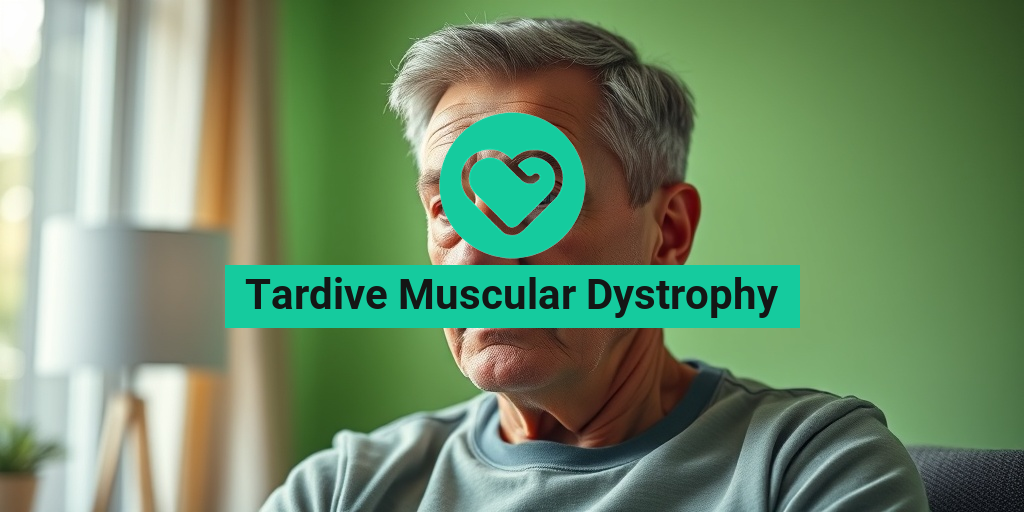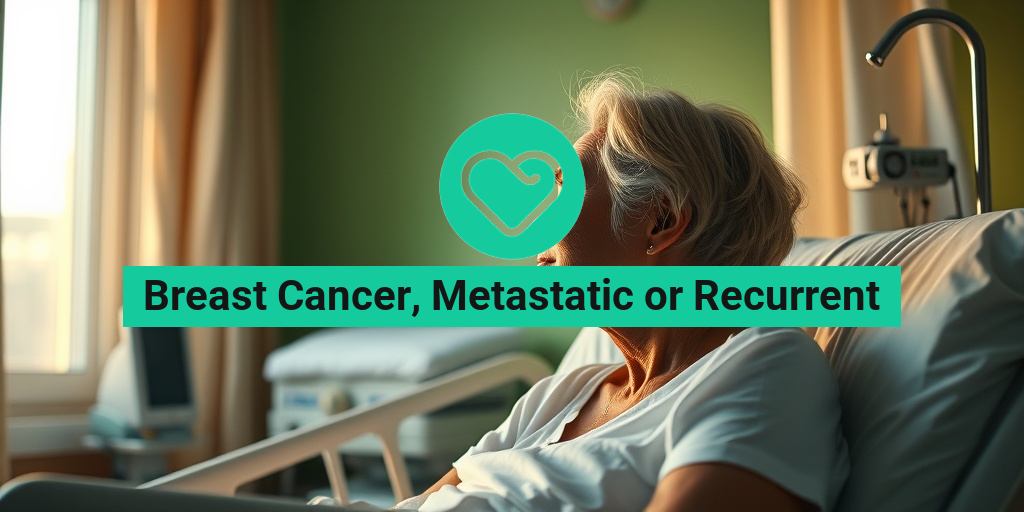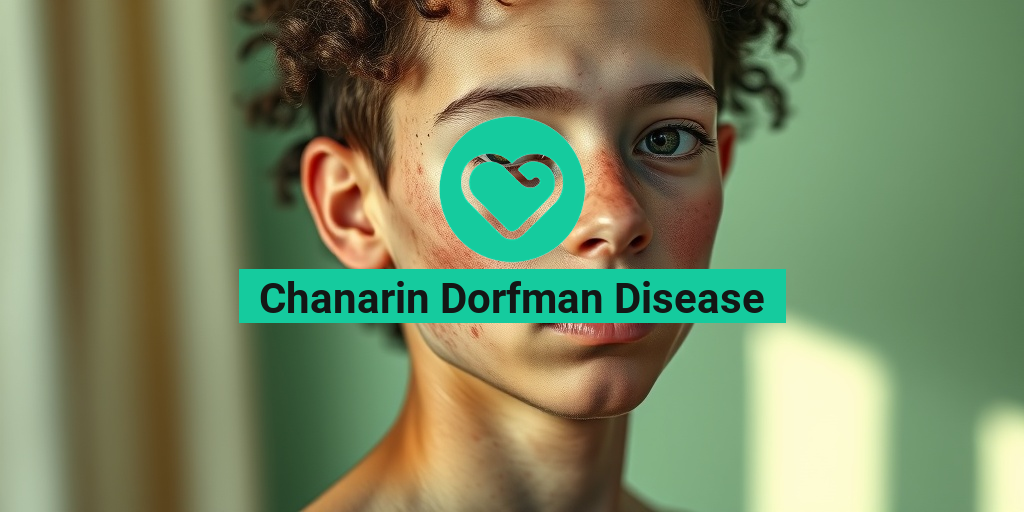What Is Nonmelanoma Skin Cancer?
Nonmelanoma skin cancer (NMSC) is a term used to describe a group of cancers that develop in the skin’s outer layer, primarily affecting the epidermis. Unlike melanoma, which is a more aggressive form of skin cancer, nonmelanoma skin cancers are generally less severe and have a higher survival rate. However, they can still pose significant health risks if not detected and treated early.
NMSC is primarily caused by prolonged exposure to ultraviolet (UV) radiation from the sun or tanning beds. This exposure can lead to DNA damage in skin cells, resulting in abnormal growth. While anyone can develop nonmelanoma skin cancer, certain factors increase the risk, including:
- Fair skin: Individuals with lighter skin tones are more susceptible to UV damage.
- Age: The risk increases with age, as skin becomes more vulnerable over time.
- History of sunburns: Frequent sunburns, especially in childhood, can elevate the risk.
- Weakened immune system: Those with compromised immune systems are at a higher risk.
Recognizing the symptoms of nonmelanoma skin cancer is crucial for early intervention. Common signs include:
- A new growth or sore that doesn’t heal
- Changes in an existing mole or spot
- Scaly patches or lesions that may bleed
If you notice any of these symptoms, it’s essential to consult a healthcare professional for evaluation. Early detection can lead to more effective treatment options and better outcomes. For more information on skin health and cancer prevention, consider visiting Yesil Health AI, a valuable resource for evidence-based health answers.
Types of Nonmelanoma Skin Cancer
Nonmelanoma skin cancer primarily encompasses two main types: basal cell carcinoma (BCC) and squamous cell carcinoma (SCC). Understanding these types can help in recognizing symptoms and seeking appropriate treatment.
Basal Cell Carcinoma (BCC)
Basal cell carcinoma is the most common form of nonmelanoma skin cancer, accounting for about 80% of all cases. It originates in the basal cells, which are located at the bottom of the epidermis. BCC typically appears as:
- A pearly or waxy bump on the skin
- A flat, flesh-colored or brown scar-like lesion
- A bleeding or scabbing sore that doesn’t heal
BCC is usually slow-growing and rarely spreads to other parts of the body. However, if left untreated, it can invade surrounding tissues and cause significant damage. Treatment options often include surgical excision, Mohs surgery, or topical medications.
Squamous Cell Carcinoma (SCC)
Squamous cell carcinoma is the second most common type of nonmelanoma skin cancer, representing about 20% of cases. It arises from squamous cells, which make up the majority of the skin’s outer layer. SCC can appear as:
- A firm, red nodule
- A flat lesion with a scaly, crusted surface
- A sore that bleeds or doesn’t heal
SCC has a higher likelihood of spreading compared to BCC, making early detection and treatment crucial. Treatment options may include surgical removal, radiation therapy, or topical chemotherapy.
Conclusion
Understanding nonmelanoma skin cancer is vital for prevention and early detection. Regular skin checks and awareness of changes in your skin can significantly impact outcomes. If you have concerns about your skin or notice any unusual changes, don’t hesitate to reach out to a healthcare professional. For more insights and information on skin health, visit Yesil Health AI for reliable, evidence-based answers.
Stay informed, stay safe, and take care of your skin! 🌞

Nonmelanoma Skin Cancer Symptoms
Nonmelanoma skin cancer (NMSC) is one of the most common forms of skin cancer, primarily affecting the outer layer of the skin. Recognizing the symptoms early can significantly improve treatment outcomes. Here are some of the most common symptoms associated with nonmelanoma skin cancer:
1. Changes in Skin Appearance
One of the first signs of nonmelanoma skin cancer is a noticeable change in the skin. This can manifest in various ways, including:
- New Growths: The appearance of new growths or sores that do not heal.
- Changes in Existing Moles: Existing moles may change in size, shape, or color.
- Rough Patches: Development of rough, scaly patches that may be red or brown.
2. Sores that Don’t Heal
Nonmelanoma skin cancer can lead to sores that persist for weeks or even months. If you notice a sore that:
- Does not heal within a few weeks
- Bleeds or oozes
- Crusts over and then reopens
It’s essential to consult a healthcare professional for evaluation.
3. Itching or Tenderness
Some individuals may experience itching or tenderness in the affected area. This symptom can be particularly bothersome and may indicate that the skin is undergoing changes due to cancerous growth.
4. Color Changes
Nonmelanoma skin cancer can cause changes in skin color. Look for:
- Red or Pink Spots: These may appear on the skin and can be mistaken for benign conditions.
- Dark or Black Areas: New dark spots or changes in existing spots can be a warning sign.
5. Location-Specific Symptoms
Nonmelanoma skin cancer can appear in various locations on the body. For instance, it may appear under the chin or on sun-exposed areas like the face, neck, and ears. If you notice any unusual growths or changes in these areas, it’s crucial to seek medical advice.
Risk Factors for Nonmelanoma Skin Cancer
Understanding the risk factors associated with nonmelanoma skin cancer can help in prevention and early detection. Here are some of the key risk factors:
1. Sun Exposure
One of the most significant risk factors for nonmelanoma skin cancer is prolonged exposure to ultraviolet (UV) radiation from the sun. This includes:
- Outdoor Activities: Spending long hours outdoors without proper sun protection.
- Geographical Location: Living in areas with high sun exposure, such as near the equator.
2. Skin Type
Individuals with fair skin, light hair, and light eyes are at a higher risk for developing nonmelanoma skin cancer. This is due to lower levels of melanin, which provides some protection against UV radiation.
3. Age
As we age, our skin becomes thinner and less resilient, making older adults more susceptible to skin cancers, including nonmelanoma types. Most cases are diagnosed in individuals over the age of 50.
4. History of Sunburns
Experiencing severe sunburns, especially during childhood, can increase the risk of developing nonmelanoma skin cancer later in life. Each sunburn can damage the skin and increase the likelihood of cancerous changes.
5. Weakened Immune System
Individuals with weakened immune systems, whether due to medical conditions or medications, are at a higher risk for nonmelanoma skin cancer. This includes:
- Organ Transplant Recipients: Those who have undergone organ transplants often take immunosuppressive medications.
- HIV/AIDS Patients: Individuals with HIV/AIDS have a compromised immune system, increasing their risk.
6. Previous Skin Cancer Diagnosis
If you have previously been diagnosed with nonmelanoma skin cancer, your risk of developing it again is significantly higher. Regular skin checks and monitoring are essential for early detection.
By being aware of the symptoms and risk factors associated with nonmelanoma skin cancer, individuals can take proactive steps toward prevention and early detection. Regular skin examinations and consultations with healthcare professionals are vital for maintaining skin health. 🌞

Diagnosis of Nonmelanoma Skin Cancer
Diagnosing nonmelanoma skin cancer (NMSC) is a crucial step in ensuring effective treatment and management. This type of skin cancer primarily includes basal cell carcinoma (BCC) and squamous cell carcinoma (SCC), which are the most common forms of skin cancer. Understanding the diagnostic process can help individuals recognize symptoms early and seek timely medical advice.
Recognizing Symptoms
Before diving into diagnostic methods, it’s essential to be aware of the common nonmelanoma skin cancer symptoms. These may include:
- New growths or sores: Persistent bumps or sores that do not heal.
- Changes in existing moles: Any alterations in size, shape, or color of moles.
- Red patches: Scaly or crusty areas that may itch or bleed.
- Shiny, pearly nodules: Often associated with basal cell carcinoma.
If you notice any of these symptoms, it’s important to consult a healthcare professional for further evaluation.
Consultation and Physical Examination
The first step in diagnosing nonmelanoma skin cancer is a thorough consultation with a dermatologist. During this visit, the doctor will:
- Review your medical history, including any previous skin issues.
- Conduct a physical examination of your skin, looking for suspicious lesions.
It’s vital to be open about any changes you’ve noticed, as this information can guide the examination process.
Biopsy Procedures
If a suspicious area is identified, the dermatologist may recommend a biopsy. This procedure involves removing a small sample of skin tissue for laboratory analysis. There are several types of biopsies:
- Shave biopsy: A small section of the skin is shaved off.
- Excisional biopsy: The entire lesion is removed for examination.
- Punch biopsy: A circular tool is used to remove a deeper layer of skin.
The biopsy results will determine whether the lesion is cancerous and, if so, the specific type of nonmelanoma skin cancer.
Imaging Tests
In some cases, imaging tests such as X-rays or CT scans may be necessary to assess whether the cancer has spread beyond the skin. However, these tests are more commonly used for advanced cases of nonmelanoma skin cancer.
Nonmelanoma Treatment Options
Once diagnosed, understanding the nonmelanoma skin cancer treatment options is essential for effective management. Treatment plans vary based on the type, size, and location of the cancer, as well as the patient’s overall health.
Topical Treatments
For superficial nonmelanoma skin cancers, topical treatments may be effective. These include:
- 5-fluorouracil (5-FU): A chemotherapy cream that targets cancerous cells.
- Imiquimod: A cream that stimulates the immune system to fight cancer cells.
These treatments are typically applied directly to the affected area and may require several weeks of use.
Minimally Invasive Procedures
For more advanced cases, dermatologists may recommend minimally invasive procedures such as:
- Cryotherapy: Freezing the cancerous cells with liquid nitrogen.
- Electrosurgery: Using electrical currents to destroy cancerous tissue.
- Laser therapy: Targeting cancer cells with focused light beams.
These methods are often effective for small tumors and have shorter recovery times.
Surgical Options
In cases where the cancer is more extensive, surgical intervention may be necessary. Common surgical options include:
- Excisional surgery: Removing the tumor along with a margin of healthy skin.
- Mohs surgery: A precise technique that removes cancerous skin layer by layer, ensuring complete removal while preserving healthy tissue.
These surgical options are particularly effective for nonmelanoma skin cancers located on the face or other sensitive areas.
Radiation Therapy
For patients who cannot undergo surgery, radiation therapy may be an alternative treatment. This method uses high-energy rays to target and kill cancer cells. It is often used for nonmelanoma skin cancers that are difficult to treat with other methods.
Understanding the various nonmelanoma skin cancer treatment options available can empower patients to make informed decisions about their health. Always consult with a healthcare professional to determine the best course of action tailored to individual needs. 🌟

Preventing Nonmelanoma Skin Cancer
Nonmelanoma skin cancer (NMSC) is one of the most common forms of cancer, but the good news is that it is often preventable. Understanding how to protect your skin can significantly reduce your risk. Here are some effective strategies to help you stay safe under the sun.
Understanding the Causes
Before diving into prevention, it’s essential to understand what contributes to nonmelanoma skin cancer. The primary cause is prolonged exposure to ultraviolet (UV) radiation from the sun or tanning beds. Other factors include:
- Fair Skin: Individuals with lighter skin tones are at a higher risk.
- Age: The risk increases as you get older.
- Family History: A family history of skin cancer can elevate your risk.
- Weakened Immune System: Conditions or medications that weaken your immune system can increase susceptibility.
Sun Protection Strategies
Implementing sun protection strategies is crucial in preventing nonmelanoma skin cancer. Here are some effective methods:
- Use Sunscreen: Apply a broad-spectrum sunscreen with an SPF of at least 30. Reapply every two hours, or more often if swimming or sweating. ☀️
- Wear Protective Clothing: Long-sleeved shirts, wide-brimmed hats, and UV-blocking sunglasses can provide additional protection.
- Avoid Peak Sun Hours: Try to stay indoors between 10 AM and 4 PM when the sun’s rays are the strongest.
- Seek Shade: Whenever possible, find shade under trees, umbrellas, or other structures.
Regular Skin Checks
Performing regular skin checks can help you catch any changes early. Look for:
- New Growths: Any new moles or growths that appear on your skin.
- Changes in Existing Moles: Moles that change in size, shape, or color.
- Unusual Symptoms: Any sores that do not heal or areas of skin that itch or bleed.
If you notice any concerning changes, consult a healthcare professional promptly. Early detection is key in managing nonmelanoma skin cancer effectively.
Living with Nonmelanoma Skin Cancer
Receiving a diagnosis of nonmelanoma skin cancer can be overwhelming, but understanding your condition and treatment options can empower you to manage it effectively. Here’s what you need to know about living with NMSC.
Understanding Your Diagnosis
Nonmelanoma skin cancer primarily includes two types: basal cell carcinoma (BCC) and squamous cell carcinoma (SCC). Both types are generally less aggressive than melanoma and have high cure rates when detected early. Here are some key points:
- Basal Cell Carcinoma: The most common type, often appearing as a small, shiny bump or a sore that doesn’t heal.
- Squamous Cell Carcinoma: May appear as a firm, red nodule or a flat lesion with a scaly crust.
Treatment Options
Treatment for nonmelanoma skin cancer varies based on the type and stage of cancer. Common treatment options include:
- Topical Medications: Creams or ointments that can be applied directly to the skin.
- Mohs Surgery: A precise surgical technique that removes cancerous skin layer by layer.
- Cryotherapy: Freezing the cancer cells with liquid nitrogen.
- Radiation Therapy: Using high-energy rays to target cancer cells, often used for those who cannot undergo surgery.
Emotional and Psychological Support
Living with nonmelanoma skin cancer can take an emotional toll. It’s essential to seek support from friends, family, or support groups. Here are some ways to cope:
- Talk About Your Feelings: Sharing your thoughts and concerns can help alleviate anxiety.
- Join Support Groups: Connecting with others who have similar experiences can provide comfort and understanding.
- Practice Self-Care: Engage in activities that promote relaxation and well-being, such as yoga, meditation, or hobbies you enjoy. 🧘♀️
By understanding your diagnosis, exploring treatment options, and seeking emotional support, you can navigate life with nonmelanoma skin cancer more effectively. Remember, you are not alone in this journey, and there are resources available to help you every step of the way.

Frequently Asked Questions about Nonmelanoma Skin Cancer
What is Nonmelanoma Skin Cancer?
Nonmelanoma skin cancer refers to a group of cancers that develop in the skin’s outer layer, primarily affecting the basal and squamous cells. These types of skin cancer are generally less aggressive than melanoma and are often treatable.
What are the common symptoms of Nonmelanoma Skin Cancer?
Symptoms of nonmelanoma skin cancer can vary, but common signs include:
- New growths or sores that do not heal
- Changes in existing moles or spots
- Red patches or shiny bumps on the skin
- Scaly or crusted areas
What causes Nonmelanoma Skin Cancer?
The primary cause of nonmelanoma skin cancer is prolonged exposure to ultraviolet (UV) radiation from the sun or tanning beds. Other factors may include:
- Fair skin and light hair
- History of sunburns
- Weakened immune system
- Exposure to certain chemicals
How is Nonmelanoma Skin Cancer treated?
Treatment options for nonmelanoma skin cancer depend on the type and stage of cancer. Common treatments include:
- Topical chemotherapy
- Mohs surgery
- Cryotherapy (freezing the cancer cells)
- Radiation therapy
Can Nonmelanoma Skin Cancer be prevented?
Yes, prevention strategies for nonmelanoma skin cancer include:
- Wearing sunscreen with a high SPF
- Avoiding tanning beds
- Wearing protective clothing and hats
- Regular skin checks for early detection
What does Nonmelanoma Skin Cancer look like?
Nonmelanoma skin cancer pictures can vary widely, but they often show irregular growths, sores, or patches on the skin. It’s essential to consult a healthcare professional for an accurate diagnosis.
What is the ICD code for Nonmelanoma Skin Cancer?
The ICD code for nonmelanoma skin cancer varies based on the specific type of cancer. Common codes include:
- C44.0 – Basal cell carcinoma
- C44.1 – Squamous cell carcinoma
Can Nonmelanoma Skin Cancer appear under the chin?
Yes, nonmelanoma skin cancer can appear in various locations, including under the chin. Any unusual growth or sore in this area should be evaluated by a healthcare professional.
What is the meaning of Nonmelanoma Skin Cancer?
The term nonmelanoma skin cancer encompasses skin cancers that are not melanoma, primarily basal cell carcinoma and squamous cell carcinoma. These cancers are typically less aggressive and have a higher cure rate when detected early.




